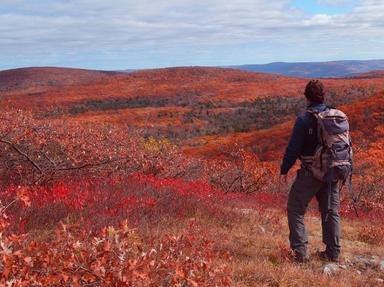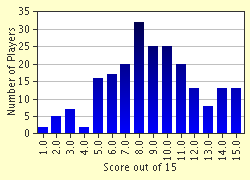Quiz Answer Key and Fun Facts
1. The Hudson River is smaller than many other famous American rivers, like the Mississippi or the Ohio. How long is the Hudson River?
2. In 1900, Frank Bannerman purchased a small island in the middle of the Hudson River and built an impressive castle/fortress there. Although it is uninhabited, many people stop their cars to look at this marvelous structure. And they ask themselves the question I am asking you: Why did Frank Bannerman build a castle in the middle of the Hudson River?
3. When Henry Hudson, for whom the river is named, discovered the Hudson River in 1609, he was not looking to settle in The New World. What was Hudson looking for?
4. True or false: the Hudson River flows in two directions.
5. This famous place overlooking the Hudson started out as a military post in the 18th Century. In 1802, it was established as a Federal military academy. What place am I talking about?
6. In the mid-19th Century, a group of men formed the Hudson River school. What was it?
7. Scholars don't always agree on the true origins of the Hudson River. However, New York State officially acknowledges only one place as being its origin. What is it?
8. Most people don't realize that the Hudson River was the site of several key battles during the American Revolution. In order to defend Manhattan, the Continental Army built forts on both sides of the river. Fort Lee was the one in New Jersey. What was the name of the fort on Manhattan?
9. When the Dutch occupied New York State, they settled two cities on the Hudson: Nieuw Amsterdam and Beverwyck. Nieuw Amsterdam is now New York City. What is the modern name for Beverwyck?
10. The great Erie Canal which linked Lake Erie to the Hudson and onward to Europe created an incredible economic expansion for the young nation. The cost of moving goods between the East Coast and the Midwest states was drastically reduced, as was the amount of time it took. It was an extraordinary accomplishment. What little known but impressive fact about the Erie Canal makes it even more extraordinary?
11. While the George Washington Bridge is probably the best known bridge to span the Hudson, there was another longer bridge (1,212 feet) that crossed the Hudson at its widest point. What was the name of this bridge?
12. Unfortunately, the Hudson River suffered from the terrible effects of pollution and the dumping of chemicals into its waters. Today, the river is remarkably cleaner and sea life is returning. Which controversial son of a famous politician has helped in cleaning up the Hudson River?
13. Commuters from New Jersey who don't want to fight the traffic on the George Washington Bridge rely on a rail system called the PATH system. This subway-like rail line runs beneath the Hudson, linking New Jersey with Manhattan. What does PATH stand for?
14. Speaking of tunnels under the Hudson River, most people know about the Lincoln Tunnel which connects 42nd Street in Manhattan with Weehawken, New Jersey. But there is another, older, vehicular tunnel further downtown. People may assume its name is a tribute to the Dutch who settled Manhattan, but it was really named after the tunnel's Chief Engineer who died before its completion. It is known as the ___________ Tunnel.
15. The Hudson in the movies! Over the centuries, the New York docks along Hudson were among the busiest in the world. In the 20th century, unfortunately, organized crime infiltrated the docks and the longshoremen who worked on them. What movie focused on organized crime's corruption of the longshoremen on the Hudson docks?
Source: Author
rocco6557
This quiz was reviewed by FunTrivia editor
minch before going online.
Any errors found in FunTrivia content are routinely corrected through our feedback system.

